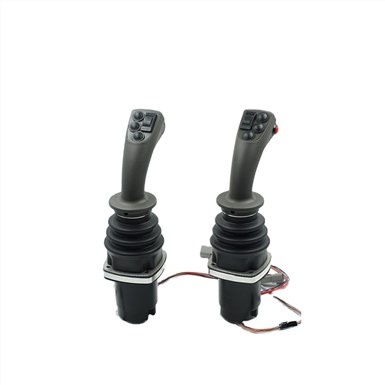Control levers, commonly known as joysticks, play an essential role in various industries around the world. Their versatility and maneuverability make them indispensable in numerous application scenarios, enhancing the efficacy and precision of various tasks.

In the construction sector, control levers are widely utilized to operate heavy machinery, such as cranes and excavators. Operators rely on these devices to manipulate equipment with accuracy, ensuring safe and efficient operation in complex environments. By delivering fine-tuned control over movements, joysticks enable workers to navigate difficult terrains and execute intricate tasks with minimal risk. This precision is crucial in construction, where even small errors can lead to significant setbacks or safety hazards.
The agricultural sector is another domain where control levers excel. Modern farming equipment, including tractors and harvesters, often incorporates joystick controls for enhanced handling. Farmers can effortlessly adjust equipment settings and navigate through fields, improving productivity and reducing physical strain. The ability to maintain control over various functionalities, such as steering and attachment movements, allows operators to focus on their tasks and optimize their workflow.
In the realm of aviation, control levers are integral to the operation of aircraft. Pilots rely on joystick-style controls to steer and maneuver planes, ensuring precision during takeoff, flight, and landing. Advanced flight simulators also employ control levers to provide realistic training environments. These applications underline the importance of joysticks in enhancing safety and performance in aviation, where accuracy is paramount.
Control levers also find significant applications in robotics and automation. In this rapidly growing field, engineers use joysticks to control robotic arms and automated systems. The precise movements offered by these devices allow for intricate tasks, such as assembling components or performing delicate surgeries in medical settings. The adaptability of control levers to various robotic applications facilitates advancements in technology and enhances operational efficiency.
Moreover, the entertainment and movie industries utilize control levers for various applications, particularly in animatronics and special effects. Technicians can manipulate lifelike models and effects with a level of precision that traditional controls cannot match. This capability enhances the overall quality of film production, enabling the creation of more engaging and visually impressive content.
The automotive sector has also embraced control lever technology. Many advanced vehicles feature joystick controls for navigation and infotainment systems, promoting user engagement while ensuring safety through focused attention. As cars become more automated, the integration of joysticks for various features like steering assistance and parking aids is becoming increasingly common.
Control levers are not limited to industrial applications; they can also be seen in medical devices. For instance, surgical robots utilize precise joystick controls, allowing surgeons to perform operations with utmost accuracy. This technology significantly improves patient outcomes and reduces recovery times, emphasizing the critical role of joysticks in modern healthcare.
As we move forward, the applications of control levers are set to expand even further. Innovations in technology will pave the way for more advanced and versatile joystick systems that can adapt to future demands.
Shanghai Chengong Electrical Control Co., Ltd. stands at the forefront of this innovation. With over 20 years of experience dedicated to the development of industrial joysticks, the company has established itself as a leader in joystick design, research and development, manufacturing, and customization services. This commitment to excellence ensures that industries can rely on high-quality control lever solutions to meet their unique operational needs, fostering growth and efficiency across various applications.